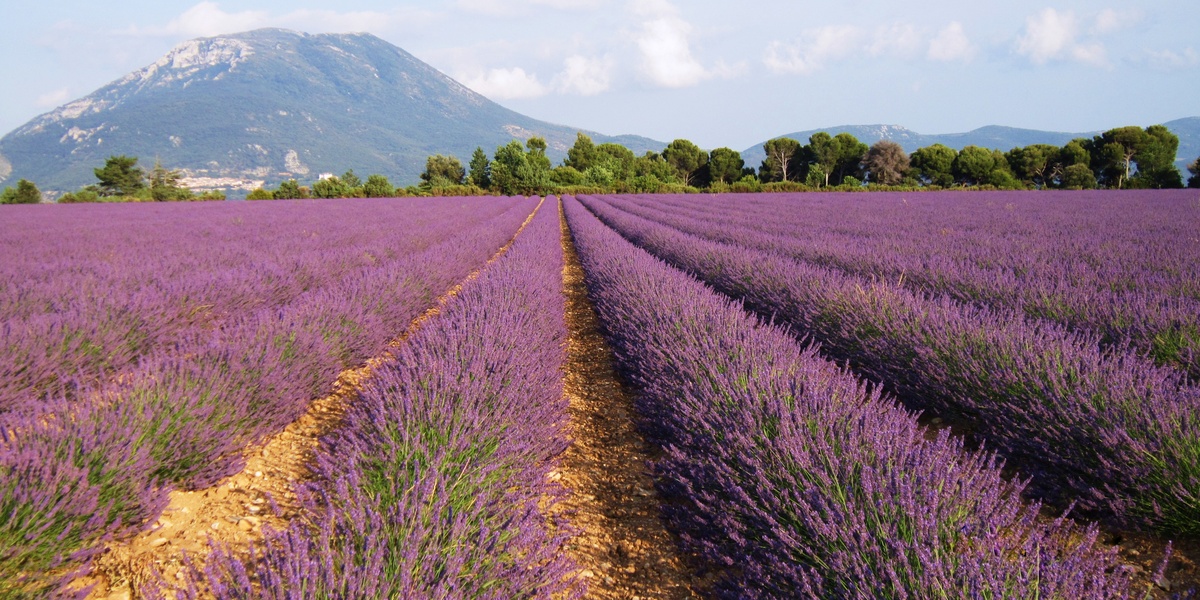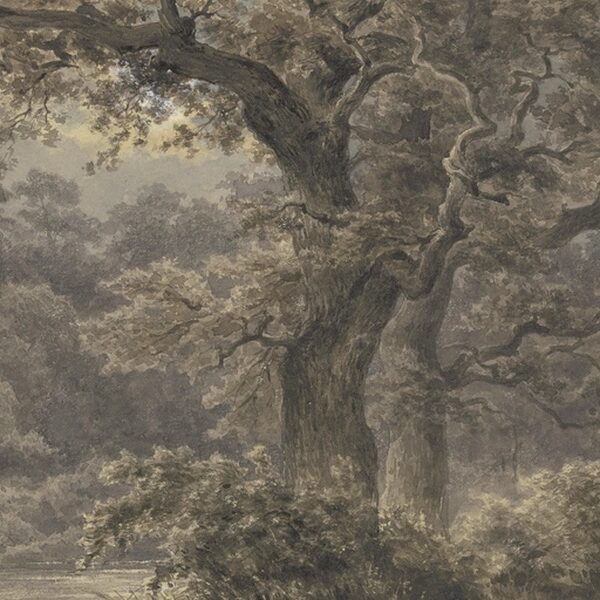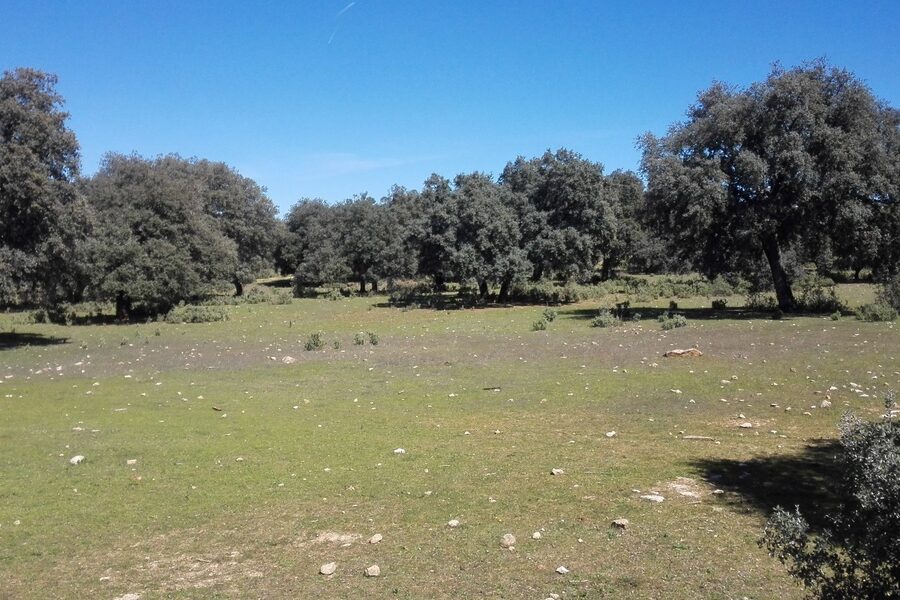France’s varied landscapes—from Mediterranean coasts and Atlantic marshes to alpine meadows and limestone plateaus—support a rich native flora that influences local habitats, wildlife and seasonal color. Knowing which species are truly native helps with conservation, gardening and enjoying wild plants responsibly.
There are 30 France’s native plants, ranging from Aleppo pine to Yellow flag iris. For each species the list shows Scientific name,Native region,Habitat & flowering so you can identify where and when they occur — you’ll find below.
How can I use the regional and flowering details to spot these plants in the wild?
Check the Native region to narrow candidates for your area, then match Habitat & flowering to the place and season you’re visiting; combining those fields with a photo or local field guide makes reliable ID much easier than relying on a name alone.
Should I collect or plant these species, and are any protected?
Some native species are legally protected or vulnerable, so avoid wild collection and consult regional regulations; for gardening, choose plants propagated by reputable nurseries and sourced locally when possible to support native ecosystems without harming wild populations.
France’s Native Plants
| Name | Scientific name | Native region | Habitat & flowering |
|---|---|---|---|
| Pedunculate oak | Quercus robur | Widespread mainland France | Deciduous woodland; Apr-May |
| Holm oak | Quercus ilex | Mediterranean & Corsica | Maquis, dry woods; Mar-May |
| European beech | Fagus sylvatica | Widespread (mountains & lowlands) | Mixed forest; May-Jun |
| Maritime pine | Pinus pinaster | SW & Atlantic coasts, Mediterranean | Sandy coastal forests; Apr-May |
| Aleppo pine | Pinus halepensis | Mediterranean France & Corsica | Coastal maquis; Mar-May |
| Common juniper | Juniperus communis | Widespread (uplands & coasts) | Heaths, rocky slopes; Jun-Aug |
| European ash | Fraxinus excelsior | Widespread mainland France | Woodland edges, riparian; Apr-May |
| Sweet chestnut | Castanea sativa | Widespread (W & mountainous) | Woodland, managed coppice; Jul-Aug |
| European yew | Taxus baccata | Widespread (woodlands & calcareous) | Shaded woodland understory; Mar-Apr |
| Lavender | Lavandula angustifolia | Alpine & montane regions | Rocky slopes, dry meadows; Jun-Jul |
| Rosemary | Salvia rosmarinus | Mediterranean & Corsica | Coastal maquis, rocky; Feb-May |
| Thyme | Thymus vulgaris | Mediterranean & Corsica | Rocky slopes, dry grassland; May-Jul |
| Montpellier cistus | Cistus monspeliensis | Mediterranean coast & Corsica | Maquis, rocky ground; Mar-Jun |
| Common poppy | Papaver rhoeas | Widespread farmland & disturbed sites | Arable margins, meadows; Apr-Jun |
| Primrose | Primula vulgaris | Widespread (woodland & hedgerows) | Shaded grass, woodland edges; Mar-May |
| Ramsons (wild garlic) | Allium ursinum | Widespread (humid woods) | Woodland floor; Apr-May |
| Foxglove | Digitalis purpurea | Widespread (disturbed & woodland) | Woodland clearings, heaths; Jun-Aug |
| Common daisy | Bellis perennis | Widespread grasslands & lawns | Lawns, meadows; Mar-Sep |
| Oxeye daisy | Leucanthemum vulgare | Widespread meadows & roadsides | Flower-rich grassland; Jun-Aug |
| Meadow buttercup | Ranunculus acris | Widespread grasslands | Meadows, pastures; Apr-Jul |
| Early-purple orchid | Orchis mascula | Woodlands, grasslands (widespread) | Calcareous woods, meadows; Apr-Jun |
| Bee orchid | Ophrys apifera | Widespread (especially calcareous) | Calcareous grassland; May-Jun |
| Lady’s-slipper orchid | Cypripedium calceolus | Rare (mountains & calcareous woods) | Calcareous beech woods; May-Jun |
| Wood anemone | Anemone nemorosa | Widespread deciduous woodlands | Woodland floor; Mar-May |
| Thrift | Armeria maritima | Coastal zones (Atlantic & Mediterranean) | Sea cliffs and saltmarsh; May-Aug |
| Gorse | Ulex europaeus | Atlantic coast, inland heathlands | Heathland, scrub; Nov-May |
| Hawthorn | Crataegus monogyna | Widespread hedgerows & woodland edges | Hedgerows, scrub; Apr-May |
| Blackthorn | Prunus spinosa | Widespread hedgerows & scrub | Hedgerows, scrub; Mar-Apr |
| Wild daffodil | Narcissus pseudonarcissus | Widespread (woodland & meadows) | Damp woodlands, pastures; Mar-Apr |
| Yellow flag iris | Iris pseudacorus | Wetlands, margins (widespread) | Fens, ponds, ditches; May-Jul |
Images and Descriptions
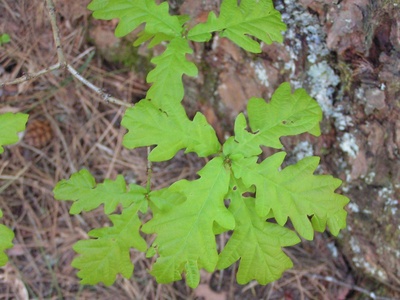
Pedunculate oak
Iconic broadleaf with deeply lobed leaves and long stalked acorns. Found in lowland and mixed forests and hedgerows, supports hundreds of insects and birds. Easy to identify by straight trunk and broad crown; often ancient, locally protected veteran trees.

Holm oak
Evergreen oak with dark, leathery leaves and small acorns common in southern France and Corsica. Forms dense evergreen canopies in maquis and garrigue. Tolerant of drought and salt; important for Mediterranean wildlife and erosion control.
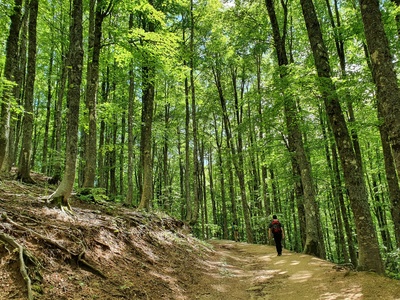
European beech
Tall, smooth-barked tree with elliptic shiny leaves and tight, layered crowns. Dominant in many cool, humid forests (Massif Central, Alps). Nuts feed wildlife; sensitive to drought and climate change—look for dense, shady beech woods in upland areas.

Maritime pine
Large pine with long needles and large, resinous cones, forming extensive coastal forests in Landes and Mediterranean zones. Important for timber and stabilizing dune systems; identifiable by flaky bark and clustered needles.
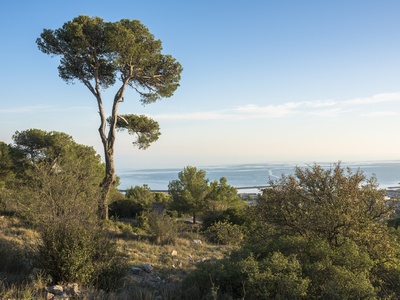
Aleppo pine
Small to medium pine of warm, dry sites with slim needles and small cones. Dominant in maquis vegetation near the sea; tolerant of heat and fire. Look for umbrella-shaped crowns on rocky slopes and coastal ridges.

Common juniper
Spiny evergreen shrub or small tree with needle-like foliage and blue berry-like cones. Found on exposed heaths and limestone outcrops. Berries used historically for flavoring and medicine; populations persist in upland and coastal habitats.

European ash
Tall deciduous tree with opposite pinnate leaves and winged samaras. Common in mixed woods and river corridors, supporting many lichens and invertebrates. Vulnerable to ash dieback; identifiable by smooth bark and clustered winged seeds.

Sweet chestnut
Large tree with serrated leaves and showy catkin flowers in summer, followed by edible spiny nuts. Long history of agroforestry in France; look for chestnut orchards and coppiced stands in mountain foothills.

European yew
Slow-growing evergreen with flat, dark leaves and red arils. Often found in ancient woodlands and churchyards, extremely long-lived and poisonous if eaten; easily identified by bright red berry-like seeds and dense foliage.

Lavender
Fragrant grey-green shrub with narrow leaves and spikes of purple flowers. Grows naturally in upland meadows and calcareous soils. Valued for oils and traditional Provence landscapes; look for dense flowering spikes in early summer.

Rosemary
Aromatic evergreen shrub with needle-like leaves and blue flowers. Common in coastal maquis and rocky outcrops; used widely in cooking and folk remedies. Look for resinous scent and upright woody stems in warm Mediterranean sites.
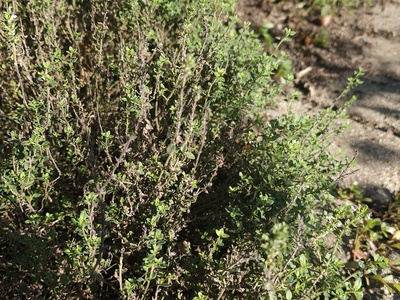
Thyme
Low, aromatic mat-forming shrub with tiny grey-green leaves and pink-purple flowers. Typical of garrigue and rocky terraces. Excellent for pollinators and traditional culinary uses; identify by strong scent when crushed.

Montpellier cistus
Evergreen shrub with narrow leaves and clusters of white flowers with a yellow centre. Common in dry, sunny garrigue and coastal scrub. Resilient after fire and important for Mediterranean biodiversity.

Common poppy
Bright red annual with delicate papery petals and black centre, classic of spring arable fields. Easy to spot along roadsides and field edges; historically symbolic and charming in rural landscapes.

Primrose
Low rosette plant with pale yellow flowers in spring. Found in damp, shaded hedgerows and woodlands. Attractive early nectar source for insects and often locally abundant in ancient, undisturbed grasslands.
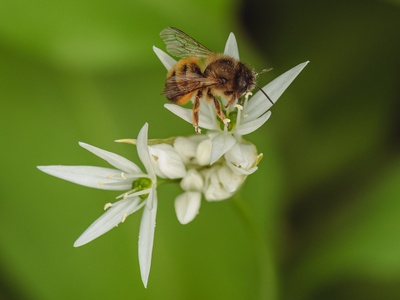
Ramsons (wild garlic)
Spring bulb with broad, glossy leaves and umbels of white starry flowers. Distinctive garlic scent when crushed, carpets of ramsons mark moist deciduous woods in spring; edible but avoid confusing with poisonous lookalikes.
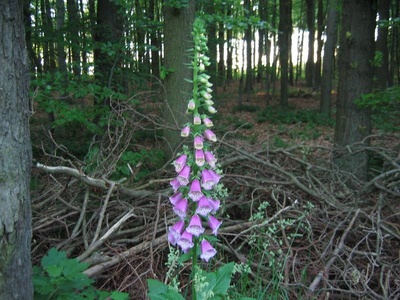
Foxglove
Tall spike with tubular, spotted purple flowers attractive to bees. Common in open woods, heaths and roadside banks. Poisonous if ingested but important for pollinators; easy to spot by its dramatic flower spikes.
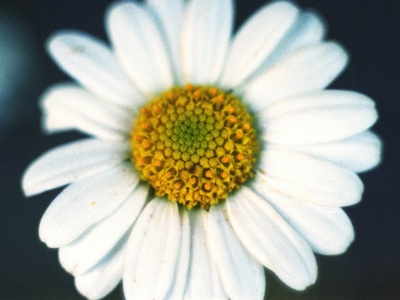
Common daisy
Low roosting plant with white ray florets and yellow centre, very familiar in lawns and meadows. Tolerant of mowing and grazing, often seen from spring to autumn; edible young leaves and historic herbal uses.
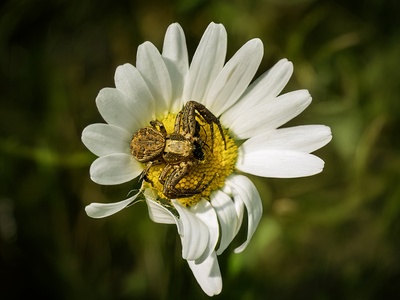
Oxeye daisy
Large white-petalled daisy with yellow disc, common in unimproved meadows and roadside verges. Important for pollinators and characteristic of summer hayfields; stands out by its tall stems and large flower heads.
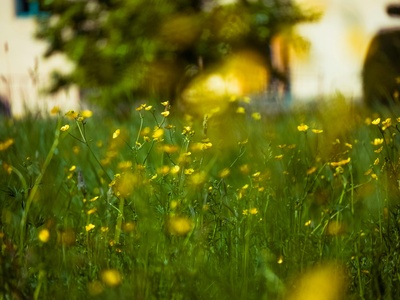
Meadow buttercup
Bright yellow, deeply petalled flowers on upright stems in moist meadows and pastures. Distinctive for its glossy petals and divided leaves; common in summer hayfields and grazing land.
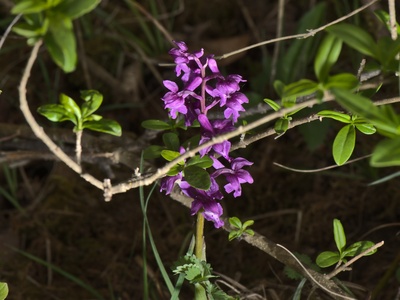
Early-purple orchid
Purple-flushed spike of orchid flowers with speckled lip growing in semi-shaded woodlands and grasslands. Variable in colour and size; look for robust stems and spotted basal leaves in spring.
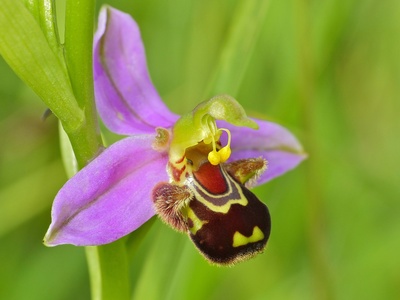
Bee orchid
Striking orchid whose lip mimics a bee to attract pollinators. Found on limestone grasslands and open, sunny sites. Flowers often brown-pink with patterned lip; easy to spot when in bloom.

Lady’s-slipper orchid
Large, rare orchid with a pouch-like yellow slipper and patterned sepals. Once widespread, now rare and legally protected in France; best admired in specialist reserves where conservation protects its fragile populations.

Wood anemone
Low spring flower with white to pale pink tepals forming carpets in ancient deciduous woods. Appears early in spring before canopy leaf-out; indicator of long-established, species-rich woodlands.
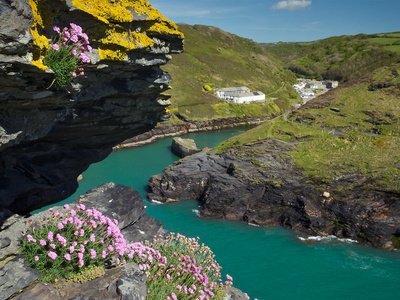
Thrift
Tufted perennial with grassy leaves and rounded pink flower heads on slender stems. Typical of exposed sea cliffs and salt-sprayed rocks, tolerant of salt and wind; common on French coasts and islands.
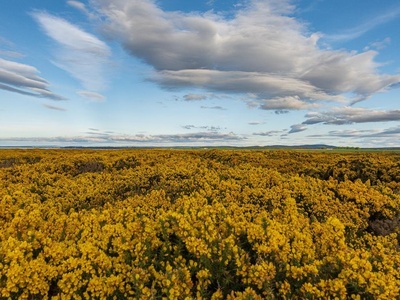
Gorse
Spiny evergreen shrub with brilliant yellow pea-flowers that can appear most of the year. Forms dense, impenetrable stands on heath and coastal dunes; important for pollinators but can dominate disturbed landscapes.
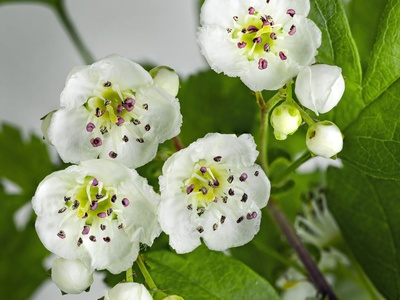
Hawthorn
Small tree with lobed leaves, clusters of white flowers in spring and red haws in autumn. A classic hedgerow species providing nectar, fruit and shelter for birds; look for thorny branches and dense winter silhouette.

Blackthorn
Dense, thorny shrub producing masses of fragrant white flowers before the leaves. Later yields small astringent sloes used in preserves. Key hedgerow species providing early nectar for insects and dense nesting habitat for birds.
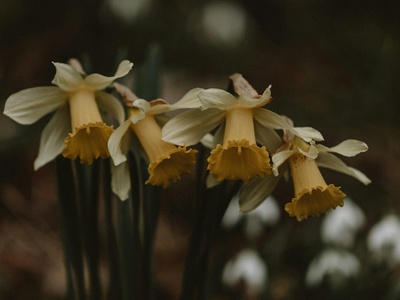
Wild daffodil
Trumpet-shaped yellow spring bulb with narrow leaves forming colonies in meadows and woodland edges. Less showy than garden cultivars, often found in ancient meadows and riverine pastures; grazed populations need protection.
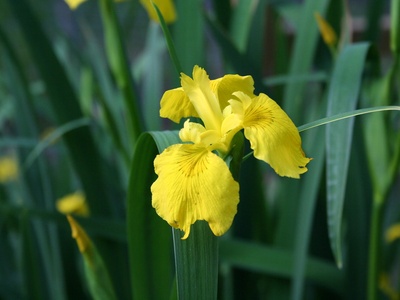
Yellow flag iris
Tall perennial with large yellow flowers and sword-like leaves, common at pond edges and wetlands. Important for wetland biodiversity and erosion control; forms dense stands along slow-moving watercourses.
